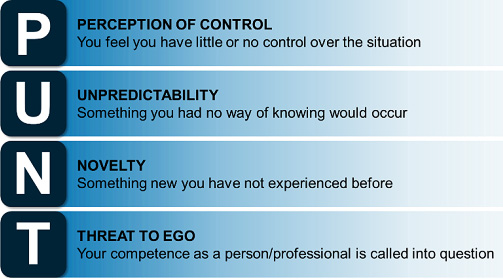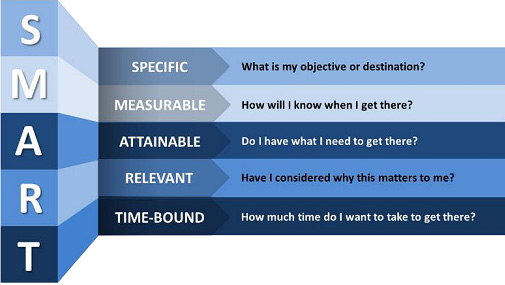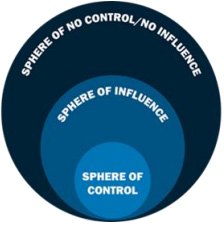Psychological Aspects of Transition Handout
This handout is designed to accompany the Psychological Aspects of Transition briefing. The handout summarizes some of the key information from the session and includes activities for you to complete.
Process of Transition
Transition from military to civilian life is a process with several phases that will vary depending on personal circumstances.
Pre-retirement
- Remote phase: release is still off in the distance, not actively planning yet
- Near phase: getting closer, setting a date and starting to prepare
Release or retirement
- Honeymoon phase (for some): for those fully retiring it can feel like an endless vacation; for others there may be anxiety about adjusting to a new work environment or focusing on rehabilitation
- Disenchantment phase: after the initial excitement some may experience a period of boredom, restlessness, or feeling unfulfilled
Reorientation phase
- Can be an opportunity to focus on who you are, what’s important to you or settle into new career pathway
Stability Phase
- Finding stability in a new routine, whether that involves a different career, physical or mental rehabilitation, part-time or volunteer work, and leisure activities
Mapping out the Journey
Some of the questions to consider as you plan for transition include:
- Where am I in the process right now?
- Am I contemplating release? In one year, less than five years?
- Do I have a release date?
- How much time do I have before the next step?
- How ready am I? (consult Road to Civilian Life questionnaire in DLN transition course)
- Have I considered where I want to end up?
- Have I thought about what my life after release will look like?
- What will I be doing with my time?
- What does my family/partner think it will look like?
- Are we planning to retire at the same time?
- Have I considered location (urban/rural, province/city or town, climate), moving, ease of travel, employment opportunities, affordability, proximity to family &friends, housing, leisure activities, availability of healthcare?
- What are some of the potential challenges? Opportunities?
- What are my hopes? Fears? Expectations? Assumptions?
- What resources and supports will I need along the way?
- Are there things that I can do now to start developing a plan?
- What are my next steps?
Starting Point
Every journey has a starting point. Take a moment to reflect on the questions below and write down your answers.
- What has it meant to me to serve in the Canadian Armed Forces?
- How has life in the CAF contributed to my identity?
- What needs has it filled?
Health Domains
The circles below represent how you allocate your time amongst seven domains of wellbeing:
- Health (physical and mental health)
- Family (spouse or partner, immediate and extended family)
- Work or professional role
- Social (support network, community)
- Leisure (fun, recreation, hobbies)
- Spiritual (activities that provide a sense of meaning, purpose, connection)
- Mental (intellectual stimulation, personal growth and learning)
How I currently allocate my time on an average weekday?
Answer(s):
How my time allocation might change after transition?
Answer(s):
Punt Characteristics
Dr Sonia Lupien, a Canadian neuroscience researcher, has identified four characteristics of situations that induce a response to stressful demands:

Figure 1 - Text version
- P
- Perception of control - You fell you have little or no control over the situations
- U
- Unpredictability - Something you had no way of knowing would occur
- N
- Novelty - Something new you have not experienced before
- T
- Thread to ego - Your competence as a person/professional is called into question
PUNT
Anticipate
Visualization can be helpful in imagining where we expect to be a year post-release. Identifying what will be different and what will be the same can influence the unpredictability and novelty of PUNT.
- What will be different?
- What will be the same?
Create a plan
Creating a plan and breaking it down into manageable segments can help manage unpredictability and increase influence and control. The strategy of goal setting can help us structure tasks into a checklist so that we can track progress. For large, complex tasks we can apply SMART goal setting, and when we feel overwhelmed with the number of things we need to do at any given point, we can use the WIN goal setting technique.

Figure 2 - Text version
- S
- Specific: What is my objective or destination?
- M
- Measurable: How will I know when I get there?
- A
- Attainable: Do I have what I need to get there?
- R
- Relevant: Have I considered why this matters to me?
- T
- Time-Bound: How much time do I want to take to get there?
SMART

Figure 3 - Text version
- W
- What's
- I
- Important
- N
- Now?
WIN
The questions on page 4 of this handout may be helpful in developing a plan.
SMART Question
What is my objective or destination?
Answer(s):
How will I know when I get there? What do I imagine it will look or feel like?
Answer(s):
Do I have the information, support and resources I need?
Answer(s):
Which parts of the plan are most important to me?
Answer(s):
How much time do I want to give myself to get there?
Answer(s):
Circles of Influence & Control
Which aspects of your plan are within your influence or control, and what are some of the factors outside of your control that you may need to accept?

The circle in the centre includes things over which we have direct control and determine the outcome. Note that it is the smallest circle. In the middle ring we have some influence or control, but other people and factors also impact the outcome. The outer sphere includes the things that are important to us but over which we have no influence or control.
As you plan the path ahead, consider where you can best focus your energy and attention as well as where negotiation or compromise may be required.
Looking at some of the questions on page 4 and your plan on the previous page, consider how much influence or control you have over various aspects on your plan. As you do this, consider what will be different and what will be the same so that you can begin to create some structure and familiarity in your daily routine.
Elements of Plan - Control, Influence, Limited/None.
Example:
Retirement location if retiring with spouse/partner.
Results: Influence
Coping Strategies

Figure 5 - Text version
Some Control
Problem focused:
- Seek information, time, resources
- Apply problem solving skills
- Distance from situation

Figure 6 - Text version
Limited influence
Emotion focused:
- Distraction (music, reading, chores)
- Relaxation (yoga, meditation)
- Social support (talk it out)

Figure 7 - Text version
Negative impacts
Unhelpful
- Alcohol, drugs, gambling
- Denial, avoidance, isolation, withdrawal
- Anger, aggression, inappropriate behaviour
Social Support
Having people who we can turn to in times of need, and with whom we can be completely ourselves, is critical to our well-being and life satisfaction. In the categories below, list the people in your life who provide each type of support, recognizing that some may have several roles.
Emotional support: people with whom you have shared life experiences and who make you feel understood, accepted and loved.
Answer(s):
Informational support: those who can share their knowledge, information and experience to help you address problems.
Answer(s):
Practical support: those who can provide tangible help when you need an extra hand or take something off your plate.
Answer(s):
Affiliation support: those who provide a sense of acceptance and belonging, encourage you and celebrate your success.
Answer(s):

